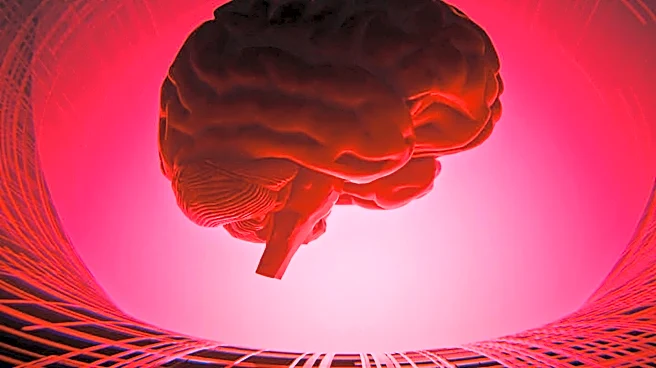What's Happening?
A collaborative team from the University of Cambridge, UCL, the Francis Crick Institute, and Polytechnique Montréal has developed a groundbreaking imaging technique to visualize protein clusters associated
with Parkinson's disease. The method, called ASA-PD (Advanced Sensing of Aggregates for Parkinson's Disease), uses ultra-sensitive fluorescence microscopy to detect alpha-synuclein oligomers in post-mortem brain samples. This advancement allows scientists to observe these microscopic structures directly, offering new insights into the disease's progression and potential early diagnosis.
Why It's Important?
This breakthrough provides a new avenue for understanding Parkinson's disease, which affects millions globally. By identifying protein clusters at the earliest stages, researchers can potentially develop more targeted treatments and diagnostic tools. The ability to visualize these oligomers could lead to earlier intervention strategies, improving patient outcomes and slowing disease progression. Additionally, the technique may be applicable to other neurodegenerative diseases, broadening its impact on medical research and treatment.
What's Next?
The research team plans to further explore the implications of their findings, potentially applying the ASA-PD technique to study other neurodegenerative diseases like Alzheimer's and Huntington's. Continued research could lead to the development of new therapies targeting specific protein clusters, offering hope for more effective treatments. The study also opens the possibility for collaborations with pharmaceutical companies to translate these findings into clinical applications.
Beyond the Headlines
The ethical considerations of this research include the importance of informed consent and the use of donated brain tissue for scientific advancement. The study highlights the role of patient contributions in driving medical breakthroughs and the need for continued support for research initiatives. Additionally, the findings may influence public health policies and funding priorities for neurodegenerative disease research.











